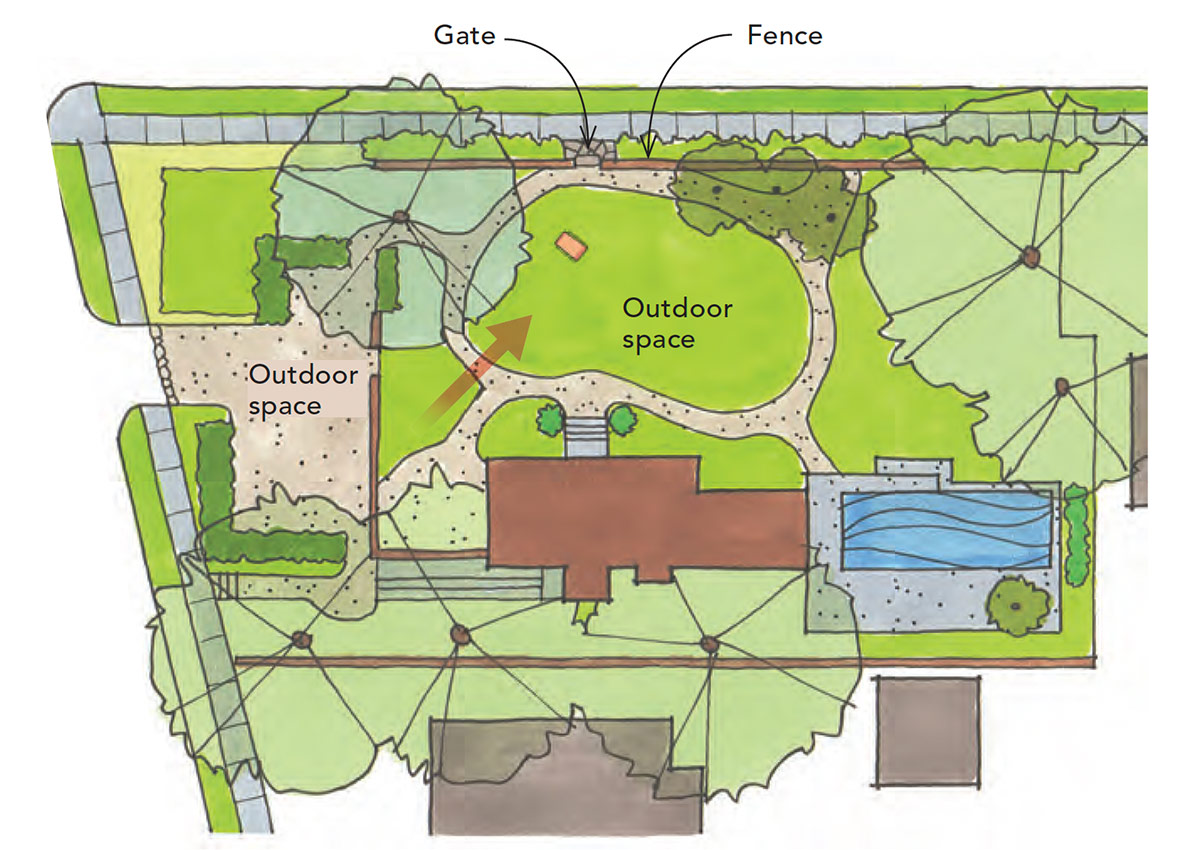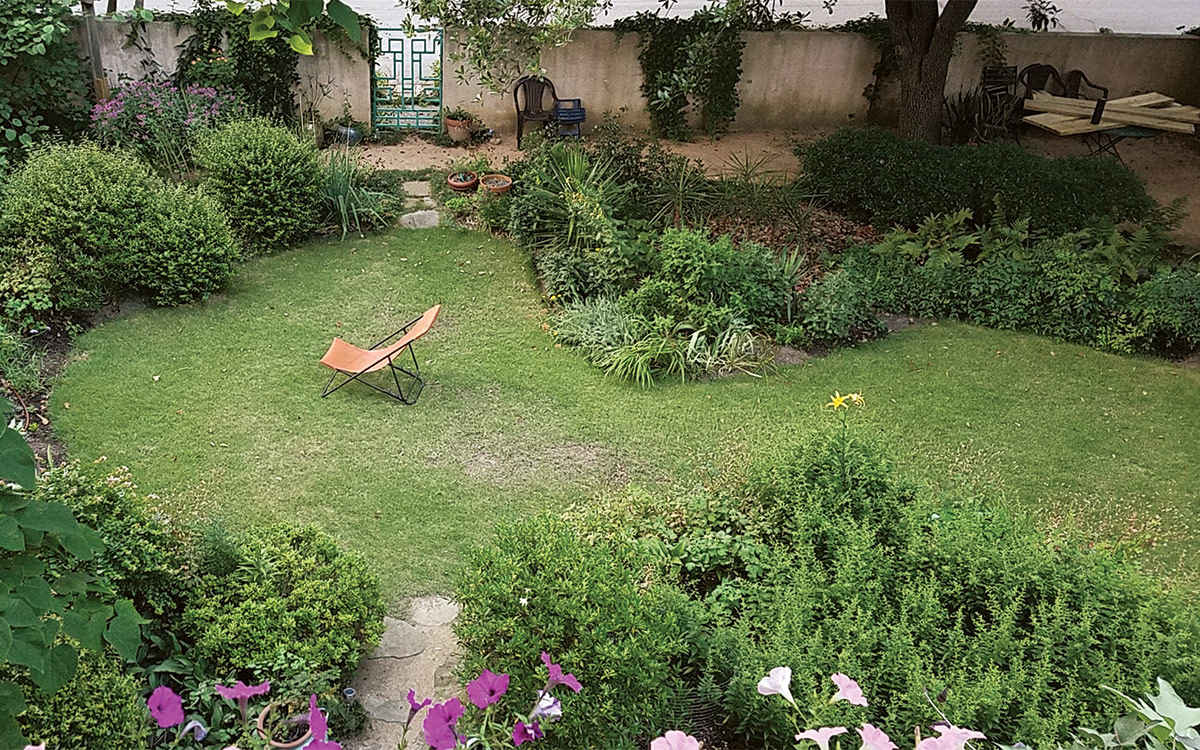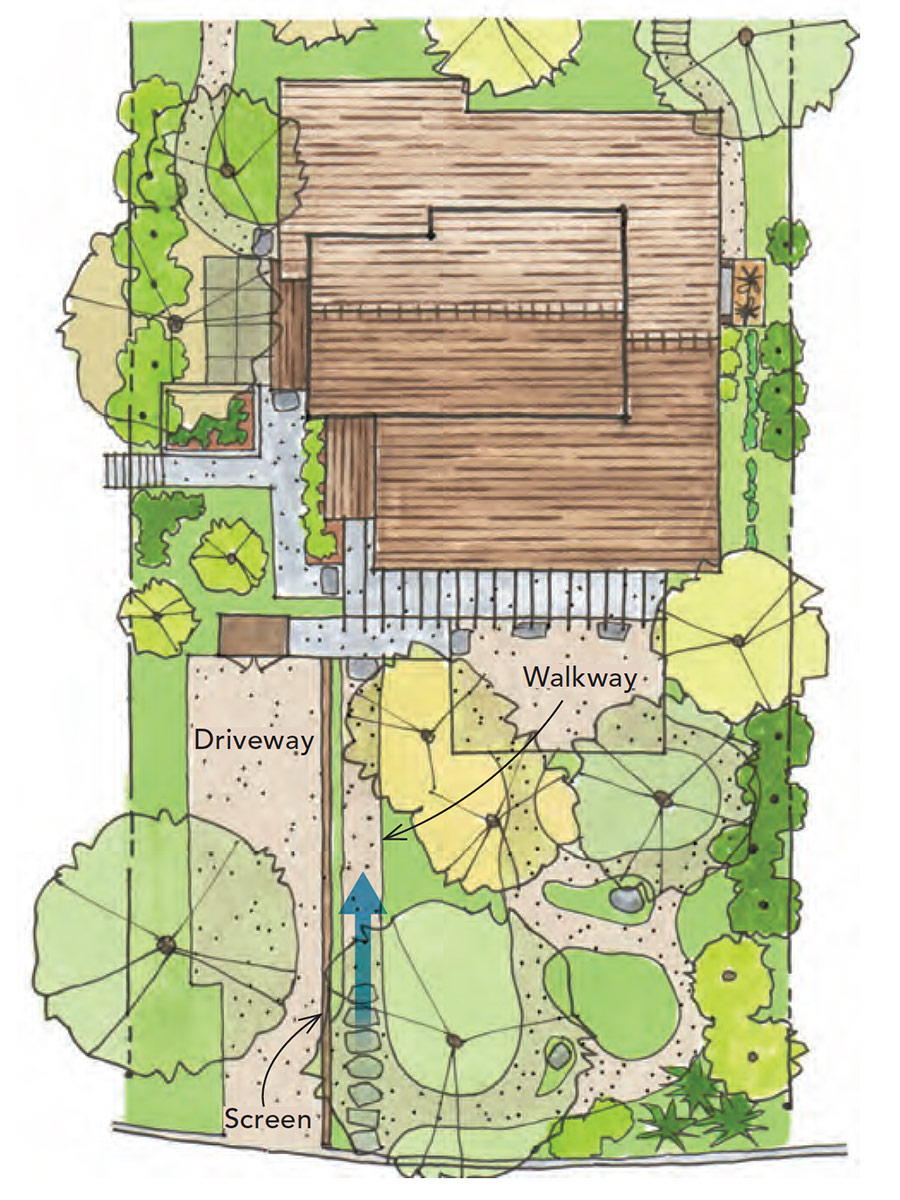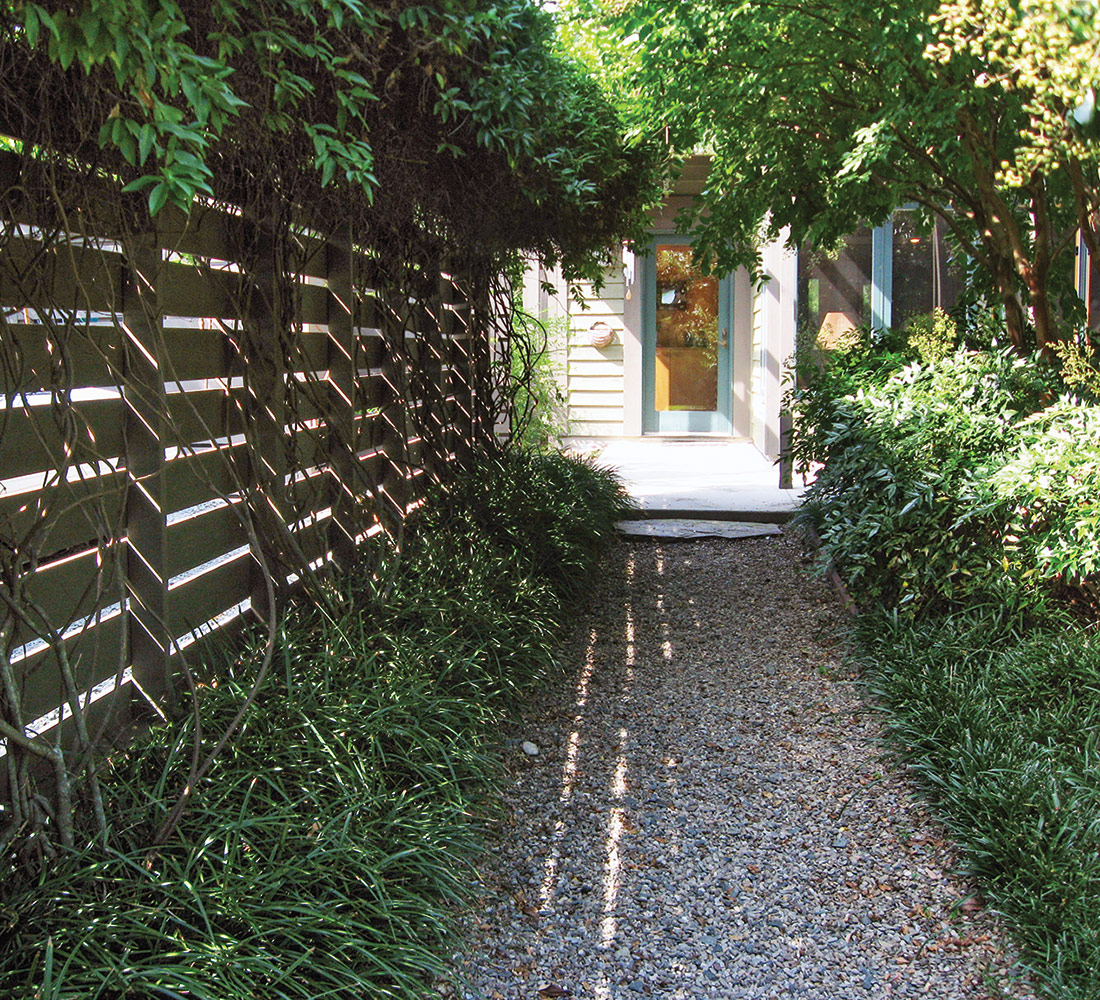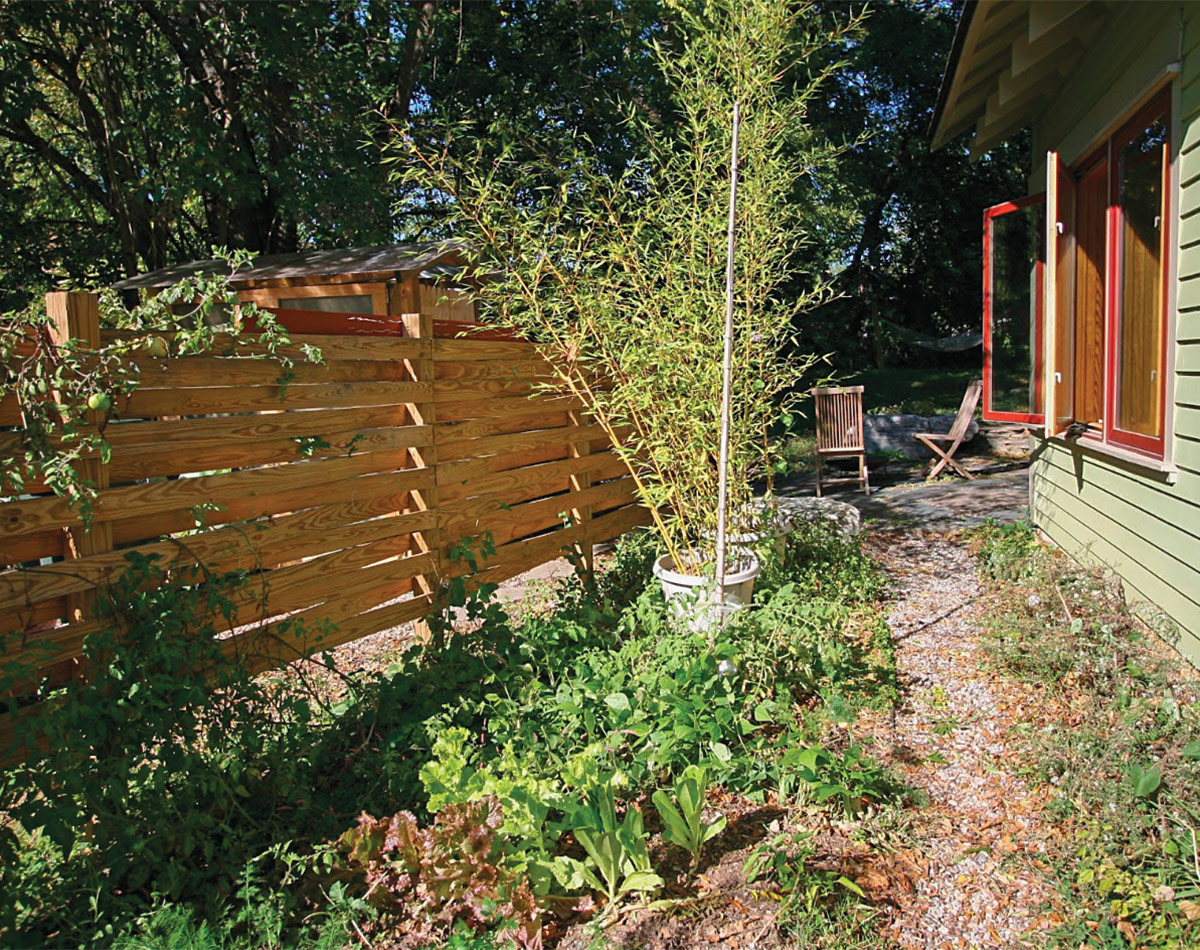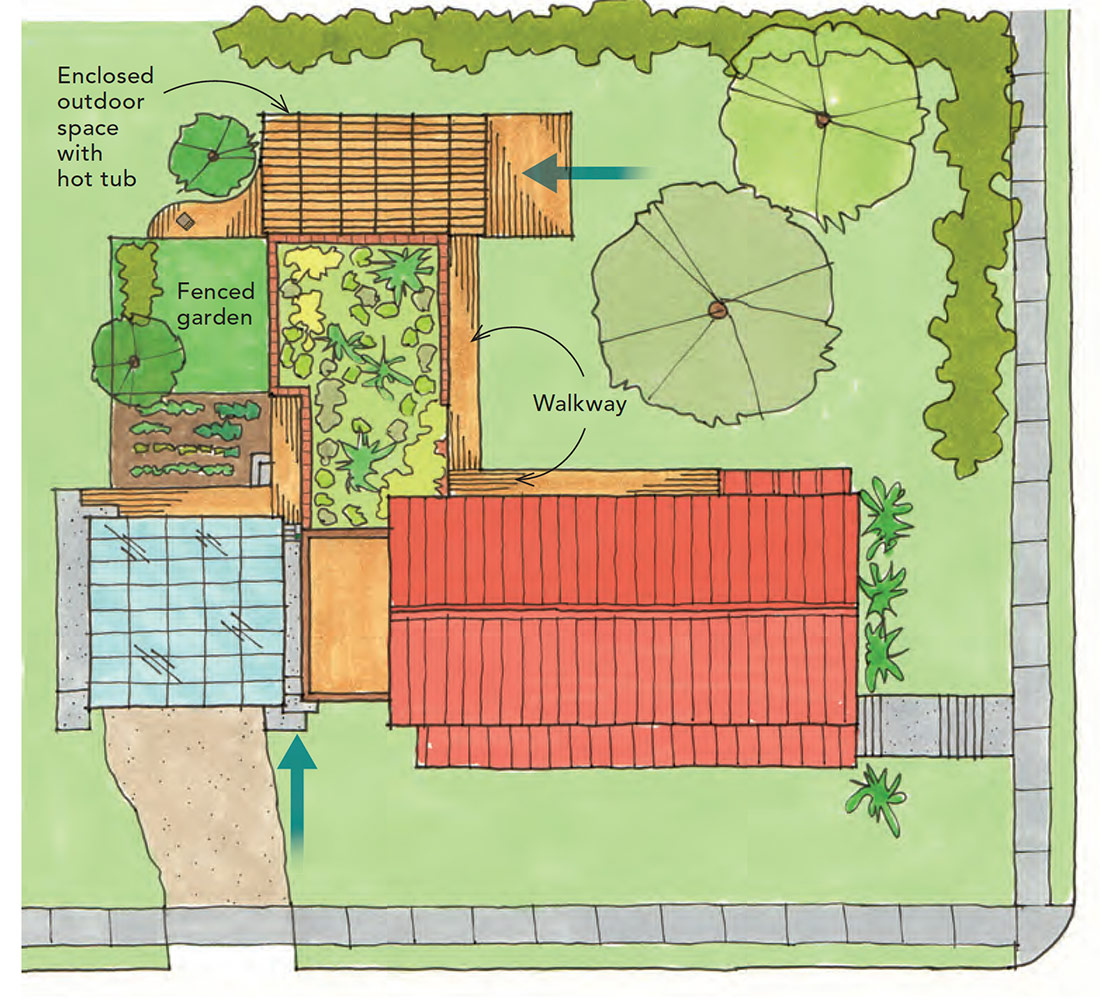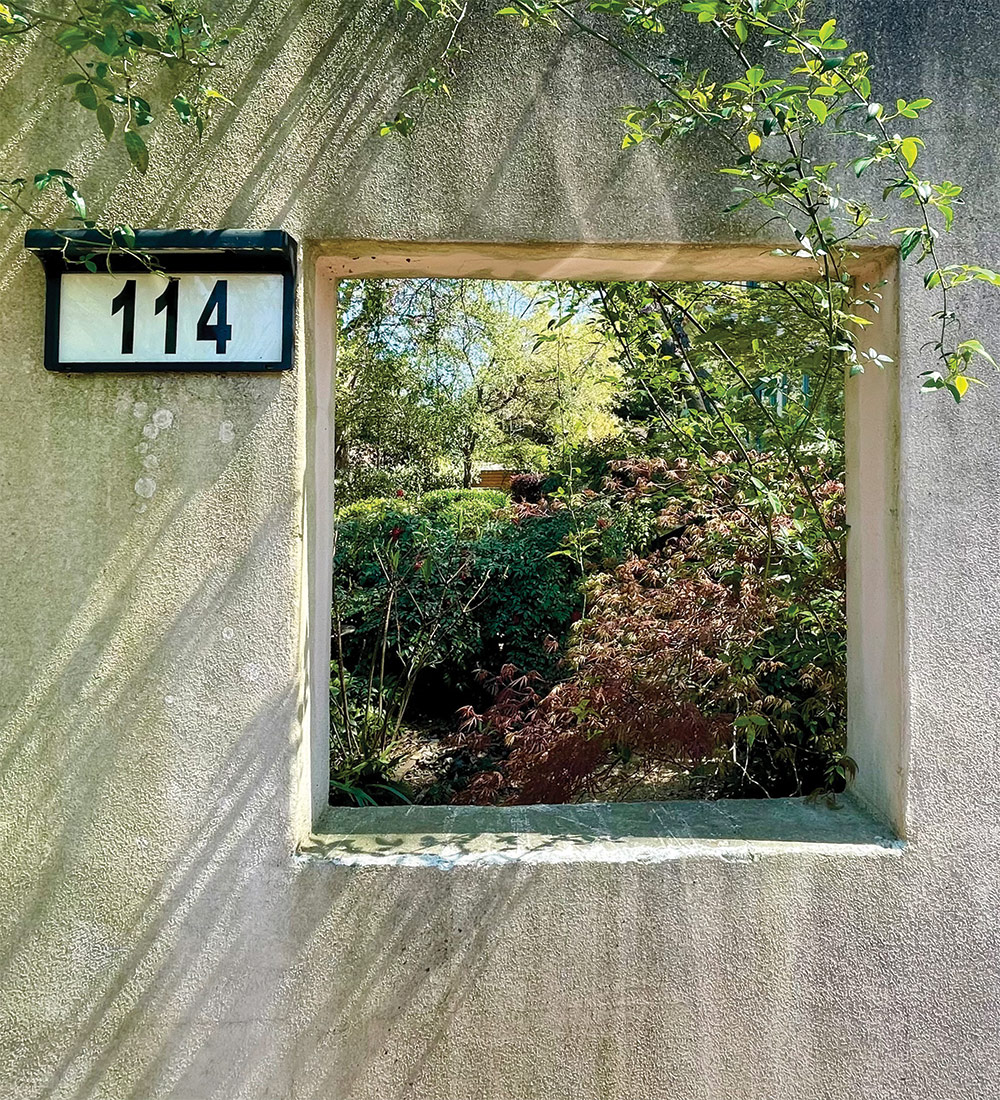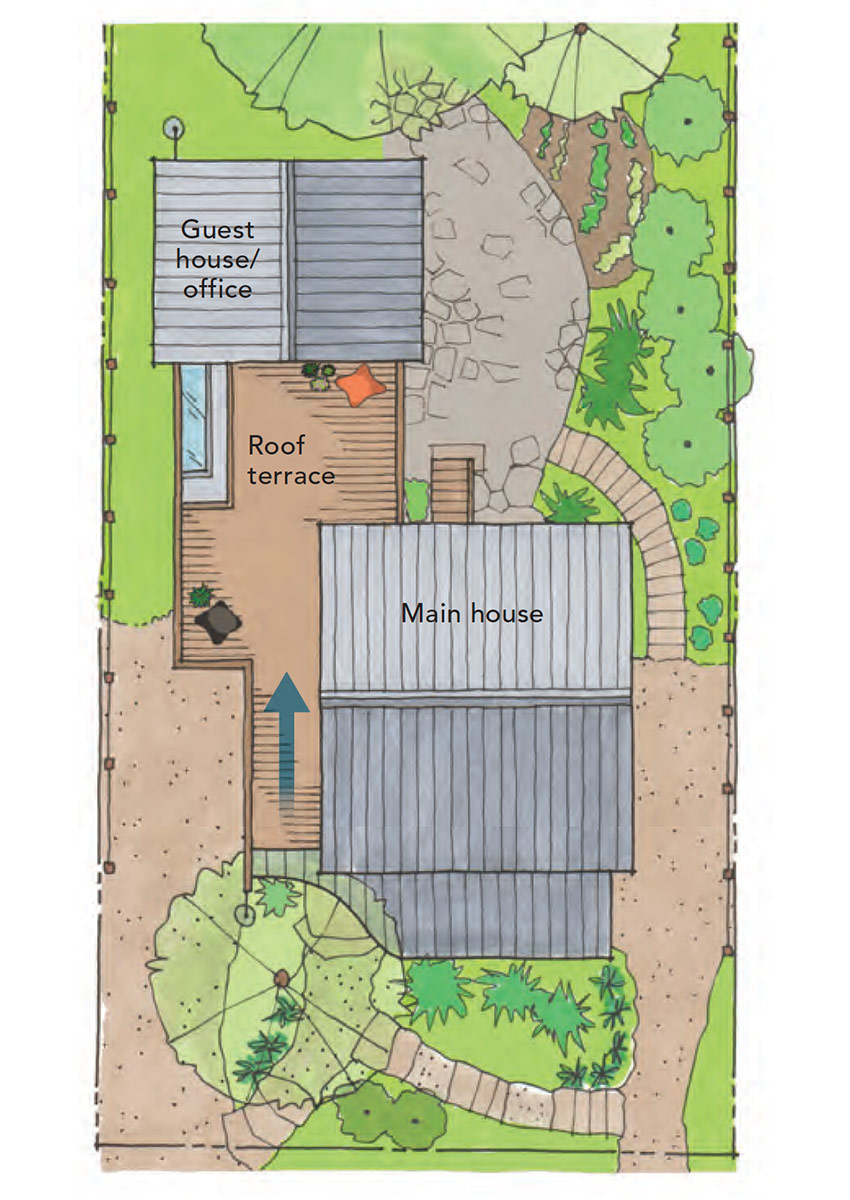6 Ways to Make a Small Lot Live Big
Strategic elements such as fences, framed views, and walled gardens can make constrained lot sizes feel both spacious and private.

Synopsis: Architect Tina Govan challenges the idea that privacy is only attainable in rural areas and large spaces. In this article, she talks about six different ways to maximize small lots to create a sense of spaciousness and privacy, including the thoughtful use of screens, walls, windows, and elements of different scale.
Throughout my years working as an architect, many people have come to me with the idea that they must move to the outskirts of town in order to get the privacy and space they seek. They believe that achieving their vision of home as a peaceful retreat, a place to replenish and connect with nature, is only possible out in the country. As development pushes farther out, however, people are realizing the difficulty of “getting away” from neighbors and the downsides of longer commutes.
Having designed houses in all types of settings, it’s become clear to me that myths about living in dense neighborhoods closer to town are ripe for busting. One- or two-acre suburban lots are not necessary to avoid feeling cramped or constricted. A typical downtown lot of 50 ft. by 125 ft. or smaller has enormous potential for spacious living, privacy, and retreat. Through thoughtful use of screens, walls, and views, your outdoor space can expand, at least in terms of how you experience it.
Though I understand the urge to be off in the woods by yourself, there are alternatives that allow you to feel secure and embedded in the natural world around you. With the proper screening, you can have your own peaceful outdoor retreat in the middle of a very dense neighborhood. In fact, the contrast can intensify your feeling of home—your garden oasis feels more special when you retreat into it within a dense context.
It’s amazing what’s possible on a tight lot, so don’t be afraid to explore the spaciousness of density and modest size. The benefits to you, your neighborhood, and the planet might be more than you imagine.
1. Enclose a small yard
It may sound counterintuitive, but enclosing a small yard with a wall or fence makes that space feel bigger because it becomes more comfortable and inviting to use. We need enclosure; it’s hard to occupy a space, inside or out, with no boundaries. It’s the same phenomenon when a home is under construction. Before the walls go up, homeowners often become concerned that the house is too small, but as walls are built and cabinetry is installed, the house seems to grow in size. These elements enclose and give scale to the space, suggesting how we might inhabit it and revealing how much livable space there really is. By defining the edges, you create a large outdoor room, and then you can begin to create various paths and places within it. You will be surprised at how a small outdoor space will expand with the simple act of enclosure, as demonstrated in this project designed by Frank and Judy Harmon.
2. Screen for privacy
Walls, screens, and fences provide separation and privacy, of course, but few people utilize their full potential. Uses that would otherwise be in conflict can be smack up against each other, which allows you to use every square inch of your lot. With a visible divider, you can be right up next to your neighbor’s yard and still feel comfortably enclosed in your own space. Without a fence, you would likely keep a distance, leaving that part of the property underutilized. Similarly, you can park your car conveniently close to your front door without it intruding into your yard or compromising the approach to your house.
These kinds of separations are becoming more important with the introduction of ADUs, Airbnbs, mother-in-law suites, and other ways that homes, especially in tight urban settings, are accommodating a wider variety of uses and unrelated occupants. Careful screening not only allows different uses to peacefully coexist, but it can weave together intimate outdoor areas, each tailored to the individual occupant or space, so that you or any tenants you may have are able to efficiently use and comfortably enjoy your entire site.
3. Maximize small areas
Outdoor rooms are actually easier to create on a smaller lot since the distance from the house to a fence on the property line is a comfortable room-size dimension. People typically gather in groups that allow for an easy talking distance and so don’t often need spaces bigger than 20 ft. or so in any direction. Additionally, when it comes to indoor/outdoor living, it’s only the immediate area around your house that is routinely used. These are the most accessible spaces, where interior living can easily spill out, so a small lot is all you really need for typical everyday use.
It’s important to remember too that the space between the house wall and a perimeter fence or wall is full of potential and the dimension doesn’t have to be large. Many do not realize that no space is too small or tight. I have a fence just 5 ft. away from my desk window, with a birdbath and flowering vines growing against it offering an idyllic view. You would never know that my neighbor’s house is just 9 ft. away. Intimate gardens and enchanting private views are possible in just a few feet of space. I have even designed outdoor showers, vertical vegetable gardens with hanging tomato plants, and covered bike storage in spaces only 5 ft. wide.
4. Create a sequence
This house in Durham, N.C., sits in a dense downtown neighborhood, and despite nearby neighbors, it is able to claim different areas of the site on all sides, each with varying degrees of privacy depending on the use and part of the house it serves. Through careful siting and screening, it brings together all aspects of its setting, from the distant view of downtown, to the historical fabric of the immediate neighborhood, to the private courtyard in back and even more private bedroom garden, outdoor shower, and slatted hot-tub room beyond. Each room of the house opens up to a corresponding outdoor space. All areas of the site are “claimed,” put to good use, and co-exist harmoniously due to thoughtful screening.
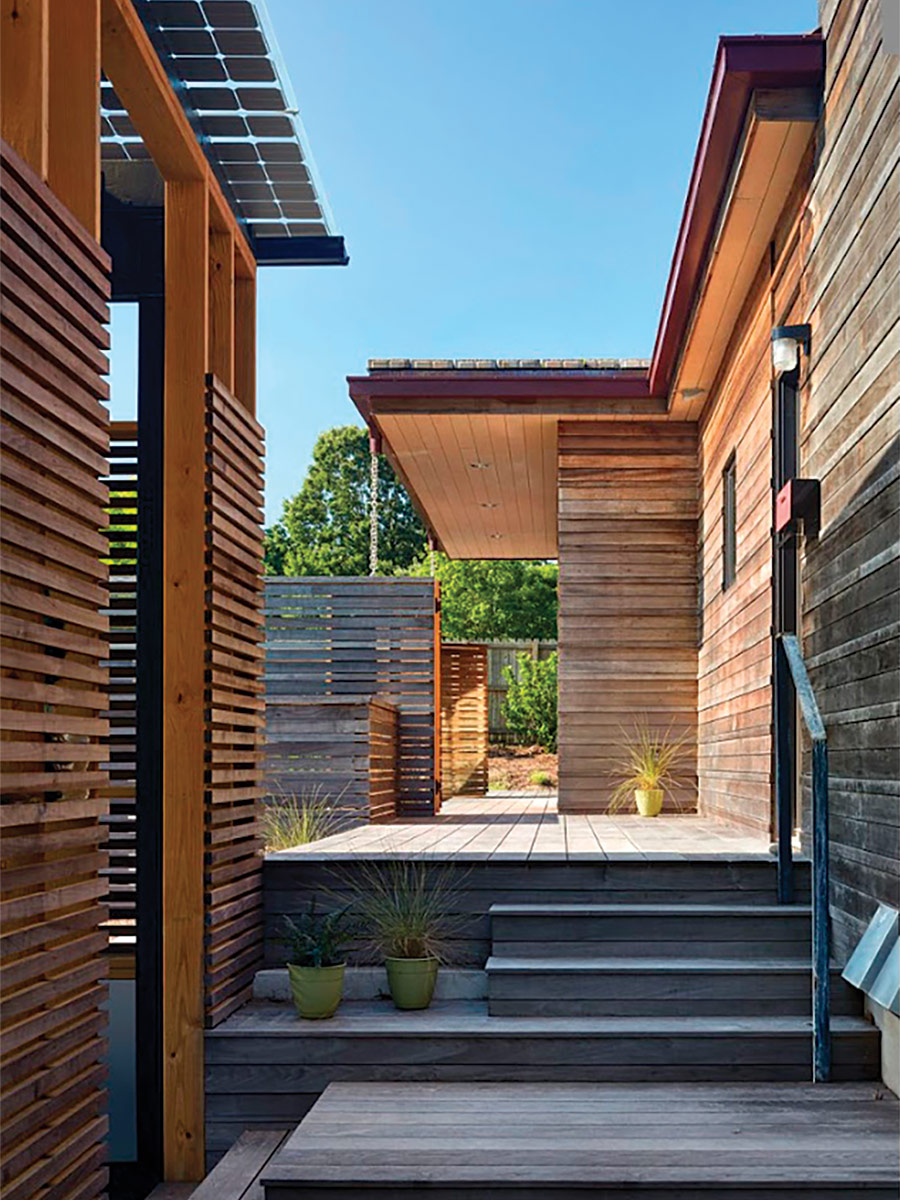
This results in an interesting series of spaces that open up to you, offering surprises and special framed views along the way. A perimeter fence or wall creates an “inside” that is outside, and within those boundaries you can create other nested ”insides,” gathering spots, paths, and views. By carefully choreographing a journey through a sequence of these spaces, the site is slowly revealed. This makes a small lot feel bigger than one large undifferentiated space, and much more interesting since you can’t grasp it all in one take. You experience the site as you move through it, not in one big ta-da! moment. It has mystery and surprise, and it can feel never-ending. This is a technique I learned while working in Japan, where small lots are typical and the Japanese work hard to make them feel intriguing, dramatic, and bigger than they are.
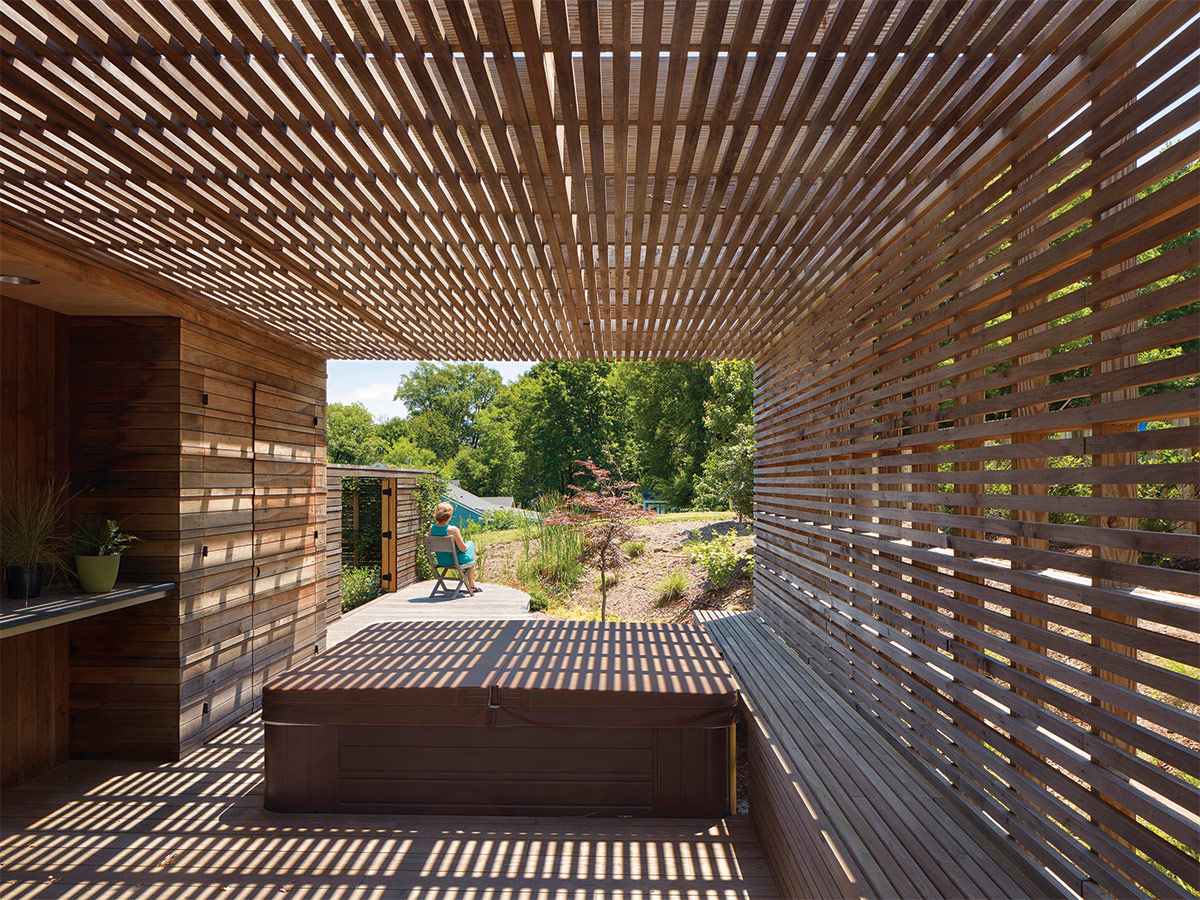
5. Frame the view
Focused views
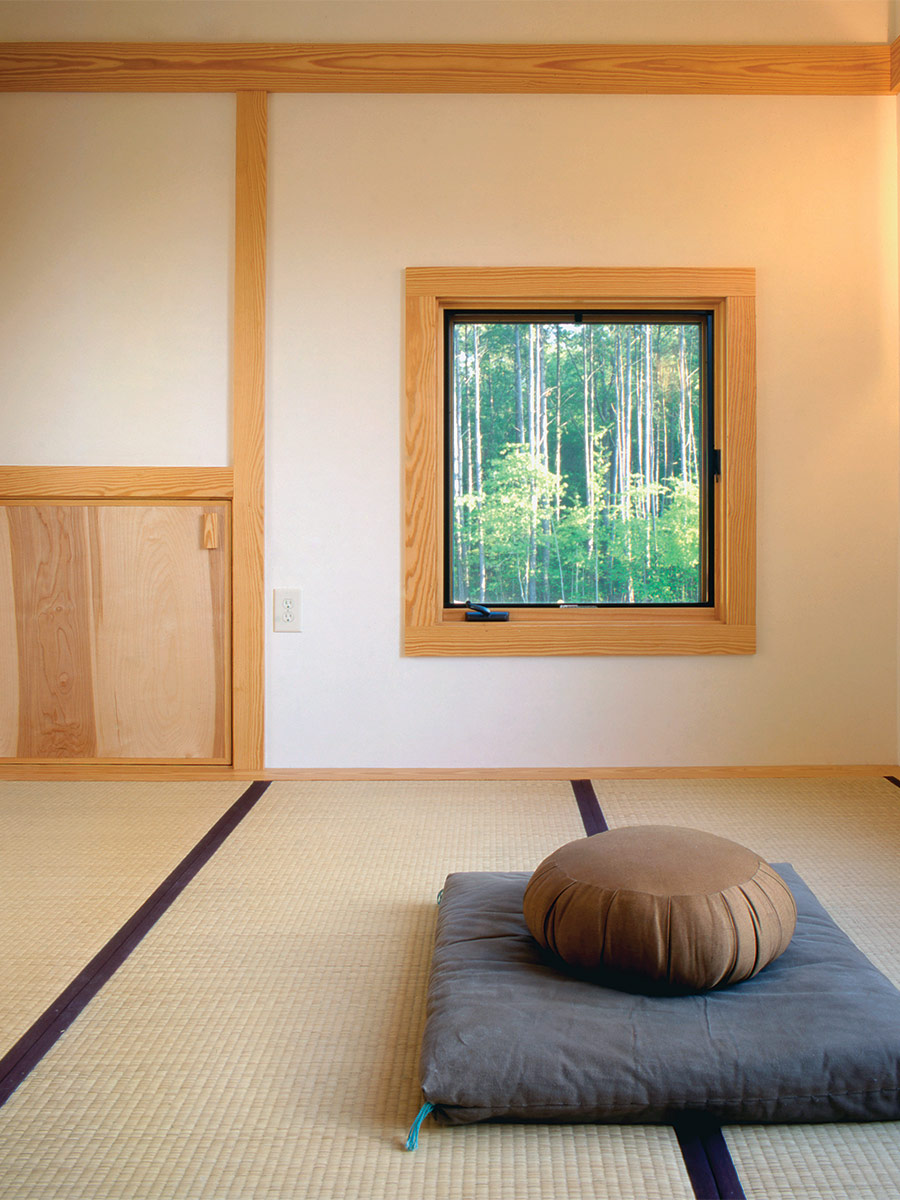
The drama of the slow reveal and offering glimpses through intentionally framed views was quite a discovery for me. Moving from one outdoor room to the next and focusing attention on different parts of the landscape along the way intensifies your experience of an environment. You “see” it differently. As part of this sequence, I am always struck by the power of the thoughtfully framed view, which has the effect of connecting the viewer more intimately to whatever is bounded by its frame. It brings pieces of the landscape close, focusing your attention so you see a particular tree trunk or rock or other feature differently. For example, how you see this grove of trees depicted in the photo above changes dramatically when only a part of it is framed. The window brings you into a direct relationship with this pattern of tree trunks, as opposed to what would otherwise appear as an undifferentiated forest.
The same idea applies to your home. I have a small window in my shower and almost every day I feel as if I am showering with a squirrel or cardinal or whatever other creature happens to appear suddenly in its frame.
Borrowed views
A carefully edited view can “grab” a distant element and bring it close, in what the Japanese call a “borrowed view.” It can be a tree in a neighbor’s yard, a church steeple across town, a distant mountain, or even the moon or stars. A larger dimension is brought directly into your home and you experience a sense of expansion and connection to the larger context of where you live. Your home, if thoughtfully designed, can gather the unique features of where you live, both far and near, and bring them close so they have a “presence” in your house that you can live and engage with everyday. Even if your house is not surrounded by vast open spaces, by bringing long axes of view into your home, in addition to thoughtfully framing close-up views, you can feel a powerful connection with both the larger and more immediate worlds around you.
6. Introduce a larger scale
I have found that in the context of small lots and dense neighborhoods, connecting to a larger scale—the landscape, the cosmos, distant views—feels especially potent. The large and small scales mutually enhance each other, so you experience each more powerfully in relation to the other. Rooftops, for example, are amazing places in the context of density, feeling even more expansive and liberating in relation to the tight-knit streets below. As an architect, I have always tried to create homes that connect the homeowner with both the up close and the far away—a flowering tree right outside your window as well as the full moon on an autumn night.
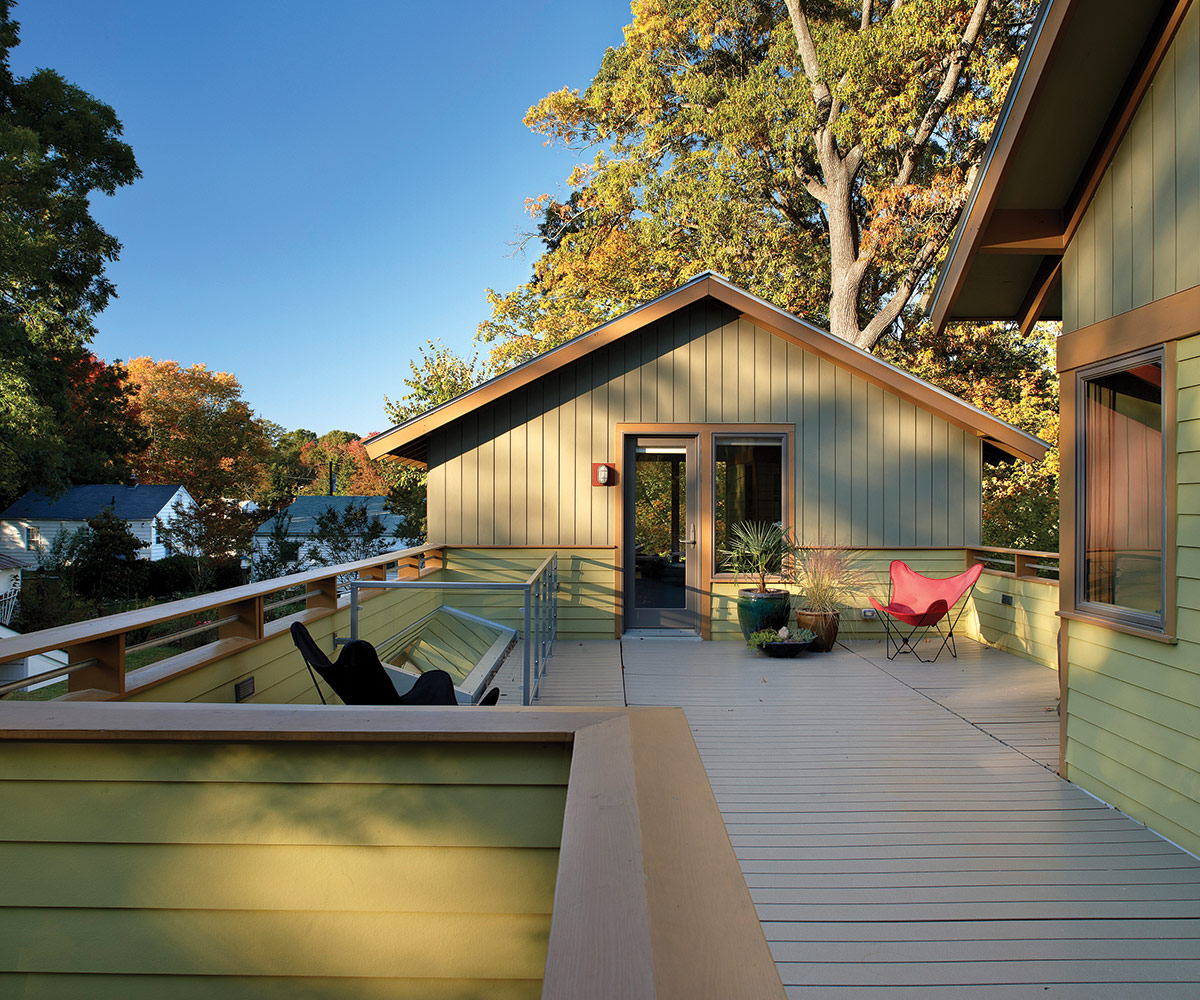
Tina Govan is an architect in Raleigh, N.C. Photos and projects by the author, except where noted.
Drawings: Martha Garstang Hill
From Fine Homebuilding #313
RELATED STORIES
- How to Design Small, Smart Homes
- Utilizing Your Whole Lot for Better Living
- Designing Outdoor Spaces: How To Get More From Your Home By Extending It Outside
Fine Homebuilding Recommended Products
Fine Homebuilding receives a commission for items purchased through links on this site, including Amazon Associates and other affiliate advertising programs.

Get Your House Right: Architectural Elements to Use & Avoid

A Field Guide to American Houses

All New Kitchen Ideas that Work
